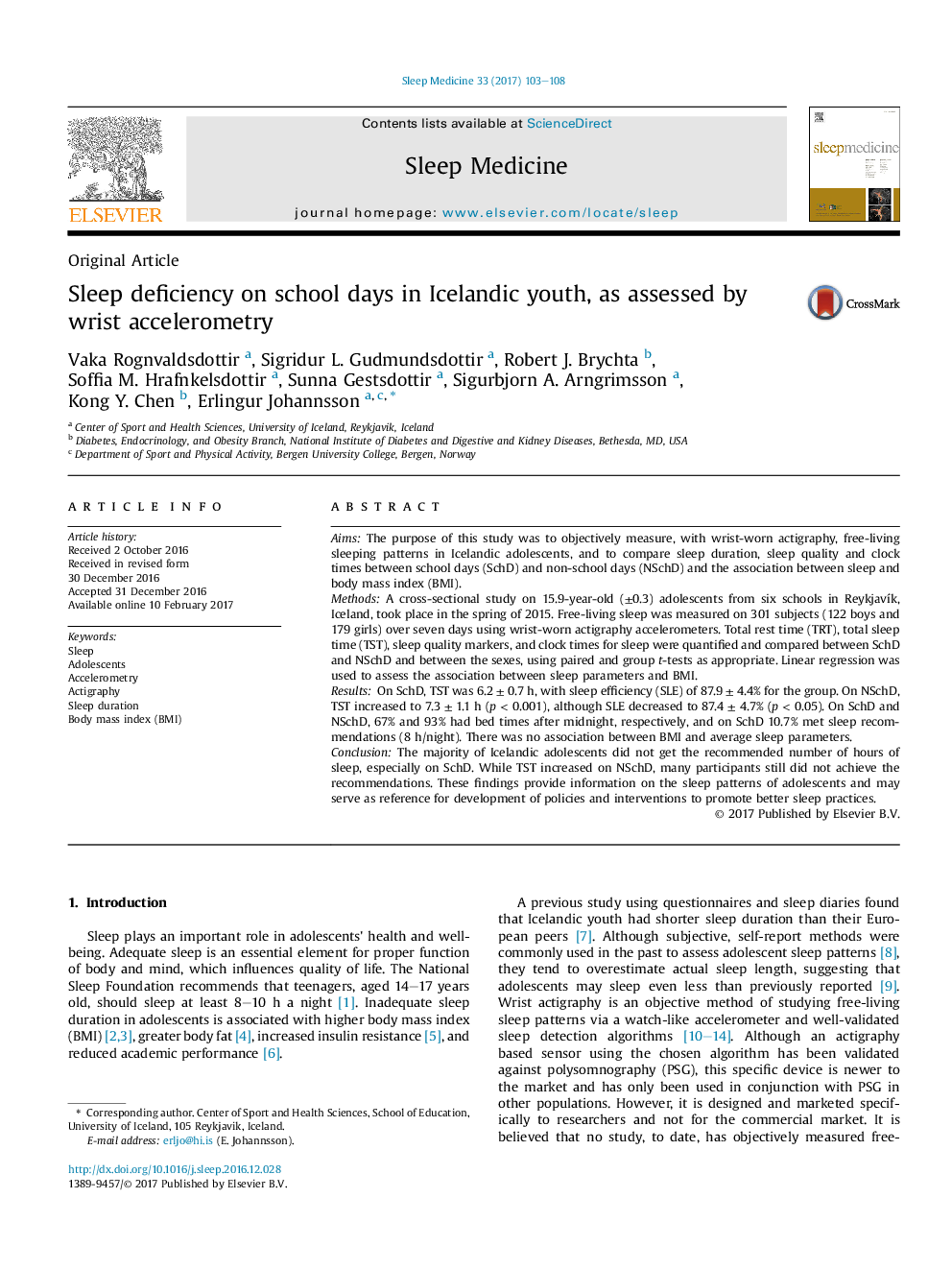| کد مقاله | کد نشریه | سال انتشار | مقاله انگلیسی | نسخه تمام متن |
|---|---|---|---|---|
| 5643755 | 1586476 | 2017 | 6 صفحه PDF | دانلود رایگان |
- On school days, 11% of Icelandic adolescents get the recommended hours of sleep.
- A longer time in bed on non-school days did not result in higher sleep quality.
- Social jetlag was apparent, with an 80-min shift in the midpoint of sleep from weekday to weekend.
- No associations were observed between sleep parameters and body mass index (BMI).
AimsThe purpose of this study was to objectively measure, with wrist-worn actigraphy, free-living sleeping patterns in Icelandic adolescents, and to compare sleep duration, sleep quality and clock times between school days (SchD) and non-school days (NSchD) and the association between sleep and body mass index (BMI).MethodsA cross-sectional study on 15.9-year-old (±0.3) adolescents from six schools in ReykjavÃk, Iceland, took place in the spring of 2015. Free-living sleep was measured on 301 subjects (122 boys and 179 girls) over seven days using wrist-worn actigraphy accelerometers. Total rest time (TRT), total sleep time (TST), sleep quality markers, and clock times for sleep were quantified and compared between SchD and NSchD and between the sexes, using paired and group t-tests as appropriate. Linear regression was used to assess the association between sleep parameters and BMI.ResultsOn SchD, TST was 6.2 ± 0.7 h, with sleep efficiency (SLE) of 87.9 ± 4.4% for the group. On NSchD, TST increased to 7.3 ± 1.1 h (p < 0.001), although SLE decreased to 87.4 ± 4.7% (p < 0.05). On SchD and NSchD, 67% and 93% had bed times after midnight, respectively, and on SchD 10.7% met sleep recommendations (8 h/night). There was no association between BMI and average sleep parameters.ConclusionThe majority of Icelandic adolescents did not get the recommended number of hours of sleep, especially on SchD. While TST increased on NSchD, many participants still did not achieve the recommendations. These findings provide information on the sleep patterns of adolescents and may serve as reference for development of policies and interventions to promote better sleep practices.
Journal: Sleep Medicine - Volume 33, May 2017, Pages 103-108
